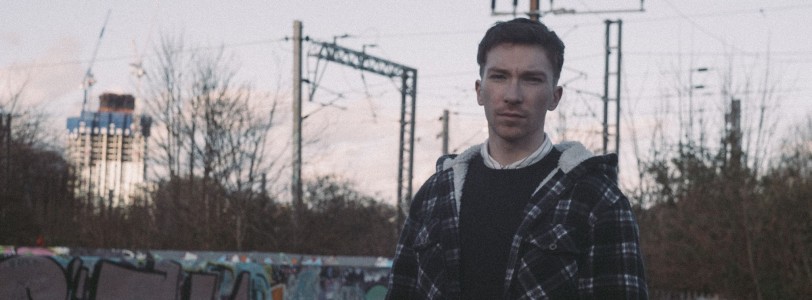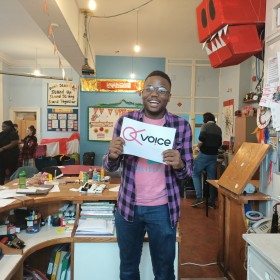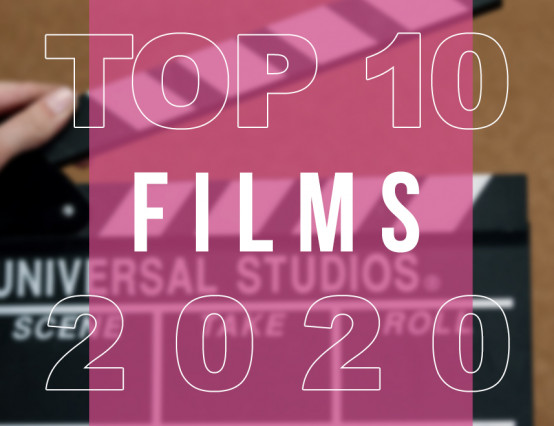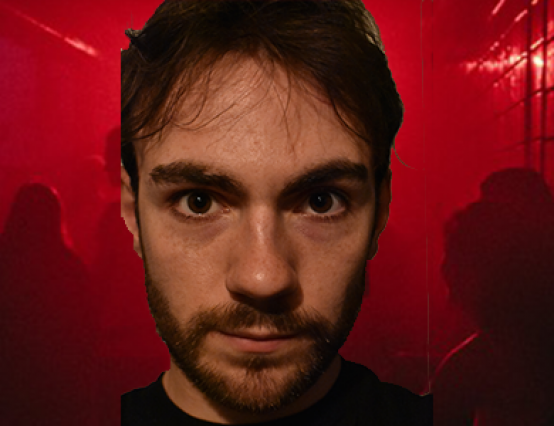Please introduce yourself and the film.
I am Mark Campbell Garrity, writer and director of Birdcage.
What was the creative process behind Birdcage?
Birdcage began life as a visual idea. I applied to New Creatives with a mood board of how the world of Birdcage should look and feel. I focused initially on world-building and planned to make a mockumentary about a society where everyone wore birdcages. The birdcages were intended to be a reflection of our own society. I applied the behaviour of birds in captivity to the people in cages. When meeting with Rural Media they encouraged me to follow a narrative model instead. The biggest creative challenge was fitting a narrative into five minutes.
I had originally intended to use a very experimental/surreal style however time/budget constraints meant I had to rethink this. I decided to go for a style inspired by painters such as Alfred Stevens and more contemporary artists such as Linder Sterling whom I worked with at Chatsworth House on her Bower of Bliss project. I contacted fashion brands that combined English heritage with contemporary styles such as Universal Works and Miss Patina who both provided beautiful costumes. The gowns worn by the Cleric were provided by the Daniel Hanson family and had belonged to Daniel Hanson himself. The cages were designed by our production designer Rosie Sutton and built by Kevin Springett whom I was introduced to through Nottingham fashion boutique OneBC. I was really blown away by how supportive everyone was and look forward to revisiting these relationships for future projects.
Fatosh Olgacher (DOP/Associate Producer) and I spent the summer travelling through the Peak District looking for locations. After looking at several locations I decided to use River Nene Cottages in Peterborough as the basis for most of the story as it fit the style I was going for perfectly. I combined this with an abandoned Mill in the Peak District to give the film a dystopian feeling of an isolated community that exists outside of time. Whilst I have my own version of events that led to how their society formed, I wanted the viewer to do their own thinking and ask them to consider how things came to be this way.
Much of the imagery in the film is inspired by religious and masonic symbolism. Religion has been used to justify all kinds of atrocities and still is today. As simple as it seems, religion comes from somewhere; the need to have rules and order for civilisation to exist. This is a theme central to the film and is seen in the Cleric’s speech at the hatching ceremony. If the characters remove the cages will their society collapse? Just as we wear the cage of society/religion, what happens if we take it off?
With all of this considered I decided to write a love story that existed in this world that I’d created. The feeling of being trapped in a cage or being forced to behave/act/conform is something that a lot of queer people can relate to and fits the theme of forbidden love in a way that is recognisable to a wider audience. I ran auditions through the Television Workshop in Nottingham and felt that Safia and Justine had really strong chemistry. It took me a while to decide which role they’d take. We tried switching the girls around to see what worked before deciding on who would be Alya and Nadia.
Fatosh and I shot all the scenes at the cottages on a DSLR with the cast a week before shooting to pre-visualise the film, this was super helpful as the small budget meant we were on really tight time and wouldn’t be able to make decisions on the day. I’d recommend others going through this process to do the same. You can see the difference between the shots we rehearsed at the cottages compared to the ones we didn’t at the Mill.
After filming we went to Hereford to edit at Rural Media’s studio. It was great working with their editor (Fran Kemp). One of my favourite things about the film is how the soundtrack turned out, I sent our composer Madison Willing a lot of contemporary music and I really loved how she converted that into a timeless score that perfectly fits the feel of the film.
What inspired the use of birdcages?
A close friend of mine kept two birds in separate cages at his house. I think they were budgies. The birds had initially been in the same cage but he had to keep them apart because they were fighting. The birds behaved very oddly when I visited, frequently calling out. When one of the birds died I became curious and googled the behaviour of birds in captivity. I noticed the behaviour of birds in captivity mirrored how people with social anxiety behave. That became the main inspiration for the film. The birdcages symbolise the idea of being imprisoned by social conformity and mental imprisonment/chastity. The cages are kind of like chastity belts of the mind rather than sexual organs. Although we live in a sexually liberated society I feel that we don’t live in a mentally liberated one. Birdcage is really about how struggling to conform to social norms can be a big source of social anxiety. Whilst the young people in this society wear literal cages, the Cleric is somebody who is trapped in his own bureaucratic cage inspired by Max Weber’s ‘Iron Cage’ concept. He’s breaking out the cage is the source of everything that unfolds and as a consequence, he is forced to act.
How much does the film draw upon real experiences of the repression of love?
It is based partly on my own adolescence, and being afraid of consequences that didn’t really exist. A lot of that comes from thinking that you have to be a certain way to be accepted due to social pressure. It also draws upon Catholic Guilt, the idea that feeling or thinking a certain way is wrong becomes very real when you’re told that daily. The cage exists as a real and imaginary way to block out people from getting close to you. I suffered from a lack of self-confidence that I managed to rationalise due to external factors. Social anxiety left unchecked can be very damaging and rob people a lot of life experience and time. I hope that my short film can help people to examine themselves and how they interact with each other and the world around them.
Do you think love is a powerful form of resistance?
It is a solid foundation to build upon. Anything that makes us question the world we live in is important. Love is powerful when it can help us remove the cage we are placed in and see each other as human.
What do you think about the way that society treats romantic relationships?
Society gives out very mixed messages about romantic relationships and young people are bombarded with totally conflicting messages about what it means to be in one. Films, television and media have a much stronger impact on how we live than most people account for. I think as individuals we have started to market ourselves like products to consume through social media. Romance through the lens of modern capitalism is a transaction.
Where can people find you online?
You can visit my website markcampbellgarrity.com to see all of my work and also visit my Instagram page @markcampbellgarrity where I will be uploading more videos.
We reviewed Birdcage, and you can read what we thought of it here.
Mark Garrity is a New Creatives artist supported by Art Council England, BBC Arts and Rural Media. Check out our New Creatives coverage in the New Creatives Voicebox.








0 Comments